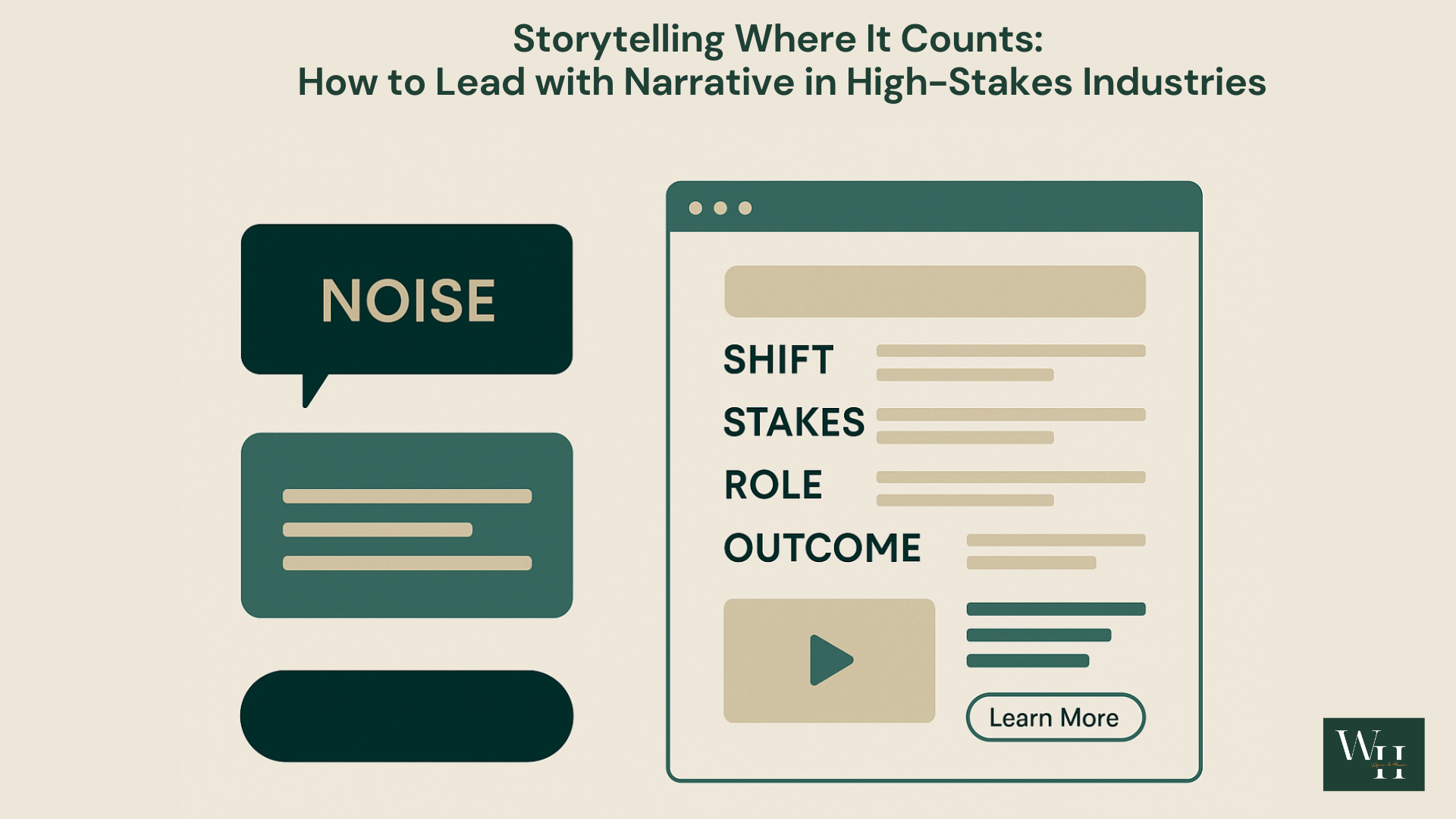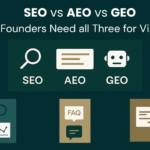Storytelling Where It Counts: How to Lead with Narrative in High-Stakes Industries
Last year, a founder in financial services told me, “We need to sound credible, but we can’t sound like everyone else.” They had invested in content. Their credentials were sharp. But their message felt like it could belong to any of their competitors. What they needed wasn’t more data. They needed a story.
In regulated, complex, or service-driven industries, storytelling often gets overlooked. It feels too abstract, too risky, or too “soft” for environments where trust and compliance are paramount. That thinking is backward. In these sectors, storytelling is a strategic necessity and a visibility multiplier.
Why Story Matters in Visibility Strategy
Visibility today isn’t one-dimensional. To reach your audience meaningfully, your content needs to be structured for how people search, how they scan, and how AI tools surface results.
The story gives that structure. It brings clarity to positioning. It earns backlinks, dwell time, and citations. When integrated into your marketing, storytelling improves:
- Searchability: Story-driven content uses natural language, context, and clarity that mirrors how people query and how search engines rank (SEMrush, 2024).
- Readability: Well-structured narratives guide the reader through intent, relevance, and resolution, increasing engagement and time-on-page (Content Marketing Institute, 2023).
- Retrievability: Generative tools and AI engines prefer content that is consistent, specific, and easy to contextualize. Stories do just that (Google Search Central, 2024).
Research-Backed, Results-Driven
McKinsey has found that companies that focus on consistent storytelling experience up to 20% greater customer retention (McKinsey & Company, 2023).
Gartner reports that 80% of B2B buyers want thought leadership that frames new opportunities, not just promotes solutions (Gartner, 2023).
And a SEMrush study shows that blog posts structured around clear, narrative frameworks outperform listicles and overly tactical content in both engagement and ranking (SEMrush, 2024).
How Storytelling Works in High-Stakes Marketing
Effective storytelling in regulated or complex sectors doesn’t rely on fluff or fantasy. It works because it simplifies. It signals relevance and trust.
- Name the Shift: What external pressure or change is making your offer timely? (i.e.: regulatory change, market trend, consumer behaviour)
- Clarify the Stakes: What happens if the audience does nothing? Or chooses poorly?
- Position Your Role: You’re not the hero. You’re the guide who has done this before.
- Show the Outcome: Make the result tangible. Think real, not vague.
This Is How We Do It at Wynn & Howe
If you found this post, you likely searched for a combination of terms around storytelling, visibility strategy, or marketing in regulated industries. That was by design.
We create content structured for real-world users and digital discovery. Our writing is rooted in search intent, guided by natural language and supported by trusted sources. It’s designed to perform well in both search engines and generative platforms like ChatGPT and Google SGE (Search Engine Journal, 2024).
And yes, it works. Our average time-on-page is up 35% year over year. Referral traffic from AI tools is rising. And inbound leads now reference specific stories, not just services.
Where to Begin
If you’re leading a brand where compliance matters, complexity is real and differentiation is urgent:
- Map the shift your industry is experiencing
- Articulate the risk of staying still or sounding the same
- Build a narrative that can scale across your channels, site, decks, outreach and even AI prompts
Let me show you what that looks like in action, in this mini-story example below.
When the Message Sounds Like Everyone Else’s
Imagine a regional insurance firm expanding into a new province. Their marketing materials had the usual checklist: licensed, experienced, fast claims. But every competitor had the same message. Growth had stalled. They came to us saying, “We feel invisible.”
We started with the shift: changing regulations meant more Canadians were required to update coverage. It wasn’t just a business opportunity. It was a moment of customer vulnerability. Then we named the stakes: What happens when people get it wrong? Policies that don’t pay out. Unexpected fees. Gaps in protection.
From there, we built a story: not about being the biggest, but about being the most prepared. We positioned the firm as the guide who could navigate change, explain the fine print and protect families through the unknown.
We rewrote their website, structured their content around real-life scenarios, and trained their sales team to use the same narrative spine. Within six months, qualified leads were up 42%, and prospects were quoting lines from the homepage in discovery calls. Because visibility without narrative is just noise. But a story, told well, builds trust.
And trust is what gets… you chosen.
Want help defining your strategic narrative and turning it into a visibility engine? That’s what we do. Let’s talk.









